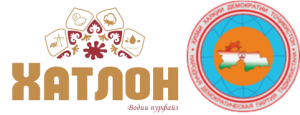Vakhsh
VAKHSH – AN AURIFEROUS (FECUND) LAND
A brief historical information. Vakhsh is one of the districts of Khatlon region of the Republic of Tajikistan, which was established on January 6, 1965 and is located in Vakhsh valley. Vakhsh borders from the north to Levakand city, from the east to Danghara and Farkhor districts, from the south to Jaloliddini Balkhi and from the west to Kushoniyon districts. The district’s area is 965.11 km2 and its population has reached 183700 people from January 1, 2016 on. There are 2 town councils, 5 village councils, 20 industrial enterprises, 3 construction companies, consumer society, utility enterprise, 2 state-owned farming, 1 community farming and more than 6000 peasant farming in the district. The district center is Vakhsh town.
Vakhsh district is one of the agricultural and industrial areas of the republic. The main sector of its farming is cotton, especially it is the sort of fine-fibred cotton, but gardening, stock-raising and cocoon-planting are also developing.
Attractive travelling areas of the district. There is one of the historical areas in Vakhsh district, which is very attractive to the archaeologists, ethnographers and tourists. This is an ancient architectural memorial, named Aiinateppa, which has been remained as a sign of Buddhism religion beliefs. The Buddhist temple (sanctuary) was built on the caravan way from Balkh area to the cities of Shumon (Hissor), Ghurkan (Gharm), Vakhsh, Hulbuk, Farkhor, Badakhshon, Chin (China), and Hinduston (India) and had served Indian and Chinese Buddhist traders and passengers. According to the archaeological researches, the temple was active at the second half of VII century and early VIII century. In 1959 an erudite T. I. Zeymal had an archaeological research in Ajinateppa. The real name of this historical memorial has not been Ajinateppa at all, and in the years of 40th of XX century the named title to that historical place has been given by the ordinary people. According to the people’s legends, in the years of 40th of XX century, in the result of the heavy rains, a part of the hill has been fallen down and there has been emerged a hole and a man has been entered into the hole and he has seen a lied down Buddha, then has come out with the fear and panic, after all, whatever he has seen inside the hole, he has told to people. Later the people of that place have started to think, that the place is the location of gins and have called it Ajinateppa.
Infrastructure service of the district. For welcoming the domestic and foreign guests, there is a worthy favorable condition in Vakhsh district, provided for the social services. The guests in Vakhsh district can make the use of the high quality communication services; the private transport for passengers; medical services; hotels, canteens and restaurants. There is only one type of transport service, an automobile service in Vakhsh district, which serves the customers round-the-clock. From the territory of the district, there passes through Termiz – Bokhtar – Yovon railway. The upland highways connect Vakhsh district to Bokhtar and Dushanbe cities. The private hotel “Musaffo” is equipped with all the modern furnishings and has 10 rooms (4-luxury, 6-standard) 1 swimming pool, 1 massage room, 4 swimming rooms, which are ready to welcome guests throughout the year. The medical service has been developed year by year, a central hospital, 4 regional clinics, a pediatric center, 13 rural health centers, 6 pharmacies, 47 health clinics, the state sanitation and epidemic center, the skin diseases hospital, serve the people in Vakhsh district.
Folk craftsmanship and skills. There are mainly Tajiks, living in Vakhsh district, who have retained their ancient folk craftsmanship till the present. The handicraft people are used to work for handmade weaving: socks-knitting, mat-knitting, carpet-knitting; needlework: chakanduzi; poraduzi (sewing something from small pieces of materials); gulduzi flower decor type of needlework; zarduzi: embroidered with golden color threads; sherozduzi: a needlework of a thin belt used for different parts of the clothes; sewing: cap-making, chodar- (veil) making, shoes-making; felt production; wooden work: wooden made dishes, wooden made cradle; carpentry: making horse saddle; blacksmith’s work: spade, mattock, sickle, knife, home-made oven for baking, home-made standing oven for baking…); cooking: special use of the dairy and bakery products, products containing meat and grass…) and so on. As well as, Vakhsh district crafty women can make various types of national dishes, such as: qalama, tahmol (types of thin bread with many layers), oshi burida (homemade dumplings), oshi palow (steamed rice), qurutob, shakarob (made of vegetable salads, curd, oil and thin breads with many layers) mantu (meat dumplings), soup (any kind) shirbat, porridge, shirravghan, nishoista (meals made out of milky) and etc very skillfully and present to the guests.
The particularities of Vakhsh district. Vakhsh district is known for its toiler people. The district mainly provides the country’s consumer market with the strawberry. In the unique nature of the district, the strawberry has been prospered well and it makes the first rate in the country with its unique taste.
Search
Archives
